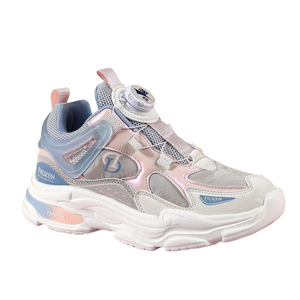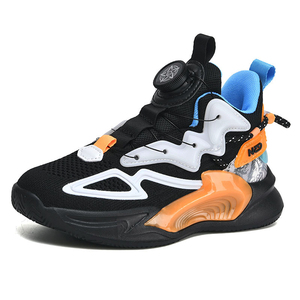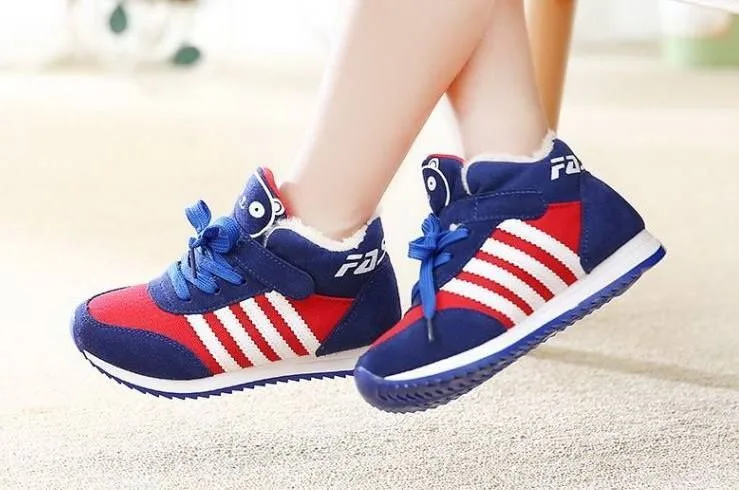News
Comparing Imported vs. Domestic Kids’ Shoes: Pros and Cons
Comparing Imported vs. Domestic Kids’ Shoes: Pros and Cons
When it comes to selecting footwear for children, parents are faced with a variety of choices, each with its advantages and disadvantages. Two of the most common options are imported kids’ shoes and domestic (locally made) shoes. Both have their unique benefits, but understanding the differences can help parents make an informed decision about what’s best for their child’s needs, comfort, and budget.
In this blog, we will compare imported kids’ shoes with domestic shoes, discussing the pros and cons of each. Whether you are considering imported shoes from international brands or supporting local manufacturers, this guide will give you insights into the quality, affordability, design, and availability of both options, helping you make the best choice for your child’s feet.
What Are Imported Kids’ Shoes?
Imported kids’ shoes refer to shoes made outside the country and shipped in for sale locally. These shoes often come from international brands that manufacture in countries with established shoe-making traditions, such as the United States, Italy, or China. Imported shoes can range from high-end designer labels to more affordable mass-market options.

Pros of Imported Kids’ Shoes
1. High Quality and Advanced Technology
One of the major advantages of imported shoes is the higher level of technology and innovation used in their production. Many global brands invest heavily in research and development to improve comfort, durability, and overall design. Imported shoes often incorporate advanced features such as:
- Memory foam insoles that provide superior cushioning.
- Breathable materials like mesh and synthetic fabrics that keep feet cool and dry.
- Non-slip soles that provide enhanced safety, especially for active kids.
These features can contribute significantly to your child’s foot health and overall comfort.
2. Wider Variety of Designs
Imported kids’ shoes typically offer a much broader range of designs and styles compared to domestic brands. Whether it’s sneakers, sandals, boots, or dress shoes, international brands provide a variety of choices in terms of color, pattern, and functionality. If your child is a fan of popular international characters or trends, you may find that imported shoes offer more options to cater to their preferences.
Additionally, many imported shoe brands focus on offering trendy and unique designs, ensuring that your child will stand out with a pair of stylish shoes that are on par with global fashion trends.
3. Brand Reputation and Recognition
Imported shoes often come from well-established brands with a global reputation for quality. Brands like Nike, Adidas, New Balance, and Puma are known for producing high-quality kids’ shoes that meet safety and comfort standards. As a result, many parents trust imported brands because of their established track record in delivering durable and well-designed footwear.
4. Availability of Specialized Features
Some imported brands focus on creating shoes that are specifically designed for certain conditions, such as:
- Orthopedic shoes: Perfect for children with special foot care needs.
- Waterproof shoes: Great for children who enjoy outdoor adventures.
- Sport-specific shoes: Designed for different sports activities, such as soccer or running.
These specialized shoes might be harder to find in domestic brands, especially in local markets.
Cons of Imported Kids’ Shoes

1. Higher Cost
One of the main drawbacks of imported shoes is the cost. Due to factors such as shipping, import duties, and premium pricing associated with well-known brands, imported shoes tend to be more expensive than domestic options. For families on a budget, this could be a significant disadvantage, especially when kids grow out of shoes quickly.
2. Sizing Differences and Fit Issues
Imported shoes may not always align with local sizing standards. While international brands often follow universal sizing charts, some children may experience issues with fit due to slight variations in size measurements. Parents may need to pay extra attention to sizing guides and ensure they are purchasing the correct fit, potentially adding time and effort to the shopping process.
3. Limited Availability
Imported shoes may not always be available in local stores or online marketplaces. While large retailers might carry popular international brands, smaller or more niche imported brands may not be as widely distributed, limiting options for parents. Additionally, limited availability can lead to issues with returns or exchanges if the shoes don’t fit properly.
What Are Domestic (Locally Made) Kids’ Shoes?

Domestic kids’ shoes are made within the country, often by local manufacturers or smaller shoe brands that focus on catering to the needs of local consumers. These shoes tend to be more affordable and may incorporate designs that are specifically tailored to the local culture, preferences, and climate.
Pros of Domestic Kids’ Shoes
1. Affordability
One of the biggest benefits of domestic shoes is their affordability. Local manufacturers don’t have to factor in shipping costs or import duties, making domestic shoes significantly cheaper than their imported counterparts. For parents looking for budget-friendly options, domestic shoes are a great choice, offering solid quality at a fraction of the price.
2. Supporting Local Economies
By purchasing domestic shoes, parents are supporting local businesses and contributing to the country’s economy. Many local shoe brands use homegrown materials and employ local workers, which helps to create jobs and promote sustainable manufacturing practices.
For parents who value supporting their local communities and reducing the carbon footprint associated with international shipping, buying domestic shoes is a win-win.
3. Easier Sizing and Fit
Domestic shoes are often more aligned with local sizing standards, making it easier to find a proper fit for your child. Local brands take into account the foot shapes and sizes typical of the population, meaning their shoes are more likely to fit well without requiring complicated size conversions or adjustments.
Additionally, purchasing shoes from local stores means you can try them on your child to assess the fit before buying, ensuring they are comfortable and properly sized.
4. Convenience and Quick Availability
Domestic shoes are readily available in local stores and online marketplaces, making it easy for parents to find what they need quickly. There’s no waiting for shipping or navigating customs processes, which can often delay the arrival of imported shoes. If you need a pair of shoes in a hurry, domestic brands are usually more accessible and faster to acquire.
Cons of Domestic Kids’ Shoes
1. Limited Style Variety
While domestic shoes can be stylish, they often don’t offer the same range of designs as imported brands. Local brands may focus on basic styles or less trendy designs, meaning your child may not have as many fashionable options to choose from compared to international brands. This can be a downside if your child is looking for the latest global trends in footwear.
2. Lower Quality Materials
In some cases, domestic kids’ shoes may be made from less durable materials than imported shoes. While many local manufacturers produce quality footwear, cheaper materials may sometimes be used to keep costs low, leading to faster wear and tear. This can be a concern, particularly if the shoes are intended for active children who will be using them for outdoor play or sports.
3. Lack of Specialized Features
Domestic shoe brands may not always offer the specialized features found in imported shoes, such as orthopedic insoles, advanced waterproofing technology, or sport-specific designs. If your child has special foot care needs or requires performance-oriented shoes, domestic options may be limited in providing the necessary features.
Key Considerations When Choosing Between Imported and Domestic Kids’ Shoes
Choosing between imported and domestic shoes ultimately depends on your priorities as a parent. Here are some key considerations to help guide your decision:
1. Budget: If you’re on a budget, domestic shoes are usually the more affordable option. However, if your child needs specialized features, such as orthopedic support or sport-specific footwear, investing in imported shoes may be worthwhile.
2. Quality and Durability: Imported shoes often use advanced materials and technology, which may lead to better durability, especially for children who are very active. However, some domestic brands also offer excellent quality at a lower price point, so it’s worth checking reviews before making a decision.
3. Design and Style Preferences: If your child is particular about their style and loves trendy designs, imported brands may have more options. However, local brands often offer unique designs tailored to the local market, which can also be fashionable.
4. Foot Health: For children with specific foot health needs, such as flat feet or high arches, imported brands that specialize in orthopedic shoes may provide more suitable options. Domestic brands may also offer orthopedic shoes but are typically more limited in this area.
Certainly! Here’s an additional 1000 words that explore how to assess shoe quality, how shoe design impacts foot health, the benefits of supporting local brands, and the environmental impact of choosing imported vs. domestic footwear.
How to Assess the Quality of Kids’ Shoes
When choosing shoes for children, it’s important to focus on more than just style or price. Quality should be the top priority, as poorly made shoes can lead to discomfort, foot problems, and long-term issues like flat feet or knee pain. Here’s how to assess the quality of kids’ shoes, whether imported or domestic:
Materials and Construction
One of the first things to check when evaluating shoe quality is the materials used. Shoes made from high-quality leather, breathable mesh, or durable rubber are generally more comfortable and long-lasting than those made with cheaper synthetics. Leather is a great material for shoes because it molds to the shape of the foot, providing better support over time. On the other hand, synthetic materials may be lighter but can sometimes lack the durability and flexibility of leather.
Also, pay attention to the stitching and construction. Well-made shoes typically feature tight, even stitching with no visible loose threads. Shoes with reinforced stitching and durable soles will hold up better during active use, especially when children are running or playing outdoors.
Flexibility and Comfort
Quality shoes should allow the foot to move naturally while providing enough support to protect growing feet. Flexible soles are important because they allow the foot to bend as it moves, preventing restrictions that could lead to discomfort. Shoes that are too stiff can cause foot strain, particularly if your child is walking or running for long periods.
Comfort is closely related to flexibility. A well-padded footbed or cushioned insole will enhance the comfort of the shoe, ensuring that your child’s feet remain pain-free, even after a long day of school or play.
Stability and Support
Children’s shoes should offer adequate arch support to help maintain proper posture and foot alignment. Shoes that are too flat or lack support can contribute to issues like overpronation (when the foot rolls inward excessively) or flat feet. Look for shoes that provide a firm heel counter and structured midsoles to ensure the foot is supported throughout the day.
The Impact of Shoe Design on Children’s Foot Health
The design of a child’s shoe plays a crucial role in their overall foot health. Shoes that fit well and offer the right support can prevent numerous foot problems, such as blisters, calluses, and even structural issues as your child grows. Let’s look at how shoe design influences foot development.
Toe Box Design and Foot Freedom
A wide toe box is one of the most important design elements to look for in children’s shoes. The toe box should allow for natural toe splay, which is essential for healthy foot development. Shoes that are too narrow can cause bunions and hammer toes, which are deformities that develop over time due to restricted toe movement.
Ensuring your child’s shoes have ample room in the toe area will not only prevent these issues but also allow their toes to move freely and develop strength as they walk and run. A cramped toe box can also lead to discomfort and pain, especially during extended periods of wear.
Heel Height and Stability
The height of the heel is another critical factor in shoe design. Shoes with high heels or exaggerated platform designs are generally not suitable for children, as they can disrupt posture and cause unnecessary strain on the feet, ankles, and knees. A flat or low heel is ideal, as it provides a stable base for the foot while ensuring proper alignment and balance.
Additionally, the heel counter, which is the part of the shoe that surrounds the heel, should be firm enough to provide support but not too rigid. A well-designed heel counter helps keep the foot properly aligned and prevents excessive movement inside the shoe, reducing the risk of blisters or friction-related injuries.
Supporting Local Brands: The Benefits for Communities and the Economy
While imported shoes often dominate the market due to their international appeal and recognition, supporting domestic brands can have significant benefits, both for your child and the local economy. Local manufacturers often focus on creating products that cater to the specific needs of the local population, and purchasing their shoes can help foster growth and sustainability within your community.
The Economic Impact of Supporting Local Brands
Buying domestic shoes helps support local businesses and artisans, keeping money within your community and creating jobs. When consumers choose locally made shoes, they contribute to the growth of small businesses, which helps create more economic opportunities for workers in your area.
Additionally, local shoe manufacturers may have a better understanding of regional preferences, designing shoes that align with local tastes, needs, and foot shapes. This localized approach ensures that the shoes are well-suited to your child’s lifestyle and the specific demands of your region.
Local Sustainability and Lower Carbon Footprint
Supporting domestic brands can also have a positive impact on the environment. Locally produced shoes do not need to be shipped long distances, which means less carbon dioxide is emitted from transportation. Furthermore, local manufacturers are often more invested in sustainable production practices, using eco-friendly materials and minimizing waste.
By choosing to buy locally, you’re not only helping to reduce your child’s carbon footprint but also supporting a sustainable and environmentally responsible industry. Many local manufacturers are now using recycled materials and energy-efficient processes to create footwear, making it an even more attractive option for eco-conscious parents.
Closer to Your Child’s Needs
Domestic brands are often more attuned to the specific needs of local children. They can create shoes with features that address the common foot health concerns or the climate in the area. For example, a local manufacturer might design shoes that provide better ventilation for hot, humid climates or waterproof shoes for regions with a lot of rainfall.
The Environmental Impact of Imported vs. Domestic Footwear
When it comes to footwear, the environmental impact is a key consideration, especially as sustainability continues to be a major focus in the fashion industry. The environmental cost of imported shoes versus domestic shoes can vary significantly, depending on the production process, materials used, and transportation methods.
Imported Shoes: The Environmental Cost of Long-Distance Shipping
Imported shoes typically require transportation across long distances, often involving multiple modes of travel such as sea freight and air transport. The shipping process involves significant carbon emissions, especially for footwear coming from countries like China, the United States, or Europe.
While many large brands take steps to offset these emissions, the reality is that long-distance shipping contributes heavily to a shoe’s carbon footprint. Additionally, the use of materials like synthetic leathers and plastics in many imported shoes may also have a greater environmental impact compared to locally sourced, eco-friendly materials.
Domestic Shoes: Reduced Carbon Footprint
Choosing locally made shoes can significantly reduce the environmental impact of your purchase. Since the shoes do not need to be shipped internationally, the carbon footprint associated with transportation is much smaller. Moreover, local manufacturers may be more likely to use regional materials, which can further reduce environmental impact and support sustainable sourcing.
Many domestic brands are also more likely to focus on eco-friendly practices, such as using biodegradable materials, natural dyes, and recyclable packaging. This focus on sustainability is becoming a key feature for many parents who are mindful of their environmental impact.
Conclusion: Which is Right for Your Child?
Choosing between imported and domestic kids’ shoes depends on several factors, including your budget, preference for brand, and your commitment to supporting local businesses. Both options offer distinct advantages, and each has its place depending on the specific needs of your child.
Imported shoes often come with a higher price tag but offer the latest in footwear technology, variety, and international brand recognition. They are perfect for parents who want access to high-quality materials, advanced features like memory foam insoles, or specialized designs.
On the other hand, domestic shoes provide an affordable and sustainable alternative, with many local brands offering shoes tailored to your child’s foot health and specific needs. Buying locally supports the economy, reduces environmental impact, and often results in a better fit, thanks to local sizing standards and designs suited for the local climate.
Ultimately, the right choice depends on your child’s needs, your budget, and the values you want to support. By carefully considering the pros and cons of each option, you can ensure that your child gets the best possible shoes for their health, comfort, and style.
Explore our collection of both imported and domestic shoes, and find the perfect pair for your child today. Whether you prioritize brand reputation, sustainability, or comfort, we have options to suit every need!Conclusion: Which Is Right for Your Child?
Both imported and domestic kids’ shoes have their advantages and disadvantages. Imported shoes often offer a wider variety of styles, advanced features, and higher quality materials, but they come at a higher price point. On the other hand, domestic shoes are more affordable, easy to find, and generally come in a better fit for local sizing standards, though they may have fewer specialized features and design options.
Ultimately, the choice between imported and domestic shoes depends on your child’s needs, your budget, and your priorities. Whether you choose imported or domestic shoes, the key is to ensure that they provide the comfort, support, and durability that will help your child’s feet stay healthy as they grow.
Ready to find the perfect pair of shoes for your child? Explore both imported and domestic options, and choose the pair that meets your needs and your child’s style preferences today!

